Today’s Current Affairs: 17th February 2023 for UPSC IAS exams, State PSC exams, SSC CGL, State SSC, RRB, Railways, Banking Exam & IBPS, etc
Table of Contents
HARBINGER 2023: RBI Announces 2nd Global Hackathon
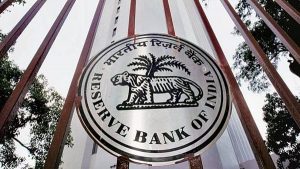
The Reserve Bank of India recently announced the “HARBINGER-2023”.
- The theme of the hackathon is “Inclusive Digital Services”.
- Competitors from 22 different countries will participate in the hackathon.
- This includes Israel, the Philippines, Singapore, Sweden, the USA, and the UK. RBI also received 363 proposals from Indian candidates.
- The hackathon is to be conducted in four segments namely Digital Banking, regulations, transactions, and the use of blockchain in transactions.
- The central bank invited fintech to participate in the Hackathon.
- They will develop solutions that will aid the differently abled to access digital financial services.
- Also, the fintech will work on increasing the reach of digital currencies of the central bank.
- Participants of the HACKATHON will get opportunities to interact with industrial experts.
- Some of them will be mentored by them. Also, new fintech can exhibit their innovative solutions.
- The winner of the hackathon will be awarded Rs 40 lakhs and the runner will receive Rs 20 lakhs.
Jal Jan Abhiyan:
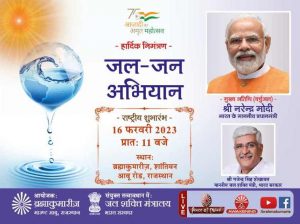
The Jal Jan Abhiyan will be implemented by the Ministry of Jal Shakti and the Brahma Kumaris organization.
- The main objective of the campaign is water conservation.
- During the campaign, the volunteers from the organization will conduct public awareness campaign on preserving water.
- The campaign is to run for eight months.
- They will focus on building new water bodies and also on preserving more than 5,000 water bodies.
- The target of the campaign is to reach at least ten crore people and organize 10,000 programs.
- The Brahma Kumaris organization is deploying its Raja Yogis to conduct the campaign.
- Raja Yogis are well-versed yoga practitioners.
- They will inspire people to prevent water wastage and pull them into the concept of a sustainable world.
- During the campaign, the participants will take a water pledge on using water wisely, and consume it judiciously.
Vibrant Villages Programme:
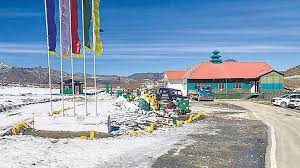
The Vibrant Villages Programme focuses on developing the rural areas in the northern border states and union territories
- More than 663 villages will be developed under the programme.
- It is to be implemented for two years, that is, between 2022-23 and 2025-26.
- The Central Government allocated Rs 4,800 crores for the scheme. Of this Rs 2500 crores will be used for building roads. Cabinet approved the scheme recently.
- Key Features of the scheme:
- One – Village – One– Product concept will be adopted
- Social entrepreneurship will be encouraged by opening growth centres.
- These centres will work on “Hub and Spoke model”
- Skill development programmes for youth and women
- Heritage development and promotion of local traditional knowledge
- Development of eco-agribusinesses
- The NGOs, cooperatives, and Self Help Groups will be involved in the scheme
Mental Healthcare Act, 2017:

The National Human Rights Commission (NHRC) gas raised concern over the Deplorable Condition of many Mental Healthcare Institutions (MHIs) in India, violating Mental Healthcare Act (MHA), 2017.
- According to the NHRC, MHIs are “illegally” keeping patients long after their recovery, which not only violates Article 21 but also highlights failure of the Governments to discharge the obligation under various international Covenants relating to rights of persons with disabilities which have been ratified by India.
- Before MHA 2017, the Mental Healthcare Act, 1987 existed, which prioritized the institutionalization of mentally ill people and did not afford any rights to the patient.
- The Act provided disproportionate authority to judicial officers and mental health establishments to authorize long-stay admissions, often against the informed consent and wishes of the individual.
- Consequently, several persons continue to be admitted and languish in mental health establishments against their will.
- It embodied the ethos of the colonial-era Indian Lunacy Act of 1912, which linked criminality and madness.
Asylums were places where “abnormal” and “unproductive” behaviour was studied as an individual phenomenon, isolating the individual from society. The intervention is meant to correct an inherent deficit or “abnormality”, thereby leading to “recovery”.
In 2017, the MHA dismantled the clinical heritage attached to asylums.
What is MHA 2017?
About:
This Act defined mental illness as “a substantial disorder of thinking, mood, perception, orientation, or memory that grossly impairs judgment, behaviour, capacity to recognize reality or ability to meet the ordinary demands of life, mental conditions associated with the abuse of alcohol and drugs.
It also provides the right of patients to access facilities that include rehabilitation services in the hospital, community, and home, sheltered and supported accommodation.
It regulates the research on PMI (Person with Mental Illness) and the use of neurosurgical treatments.
Draft Geo-heritage Sites And Geo-relics (Preservation and Maintenance) Bill, 2022:
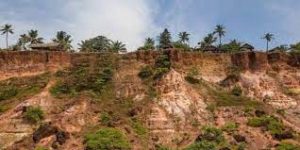
The Ministry of Mines has notified Draft Geo-heritage Sites and Geo-relics (Preservation and Maintenance) Bill, 2022.
- The Bill is aimed at providing for the declaration, preservation, protection and maintenance of geo-heritage sites and geo-relics of national importance, for geological studies, education, research and awareness purposes.
- The GSI has declared 32 geo-heritage sites, including the Siwalik Fossil Park, Himachal Pradesh; Stromatolite Fossil Park, Jharmarkotra Rock Phosphate deposit, Udaipur district, Akal Fossil Wood Park, Jaisalmer, but several are in stages of disrepair.
Features of the Bill:
- Geoheritage sites are “sites containing geo-relics and phenomena, stratigraphic type sections, geological structures and geomorphic landforms including caves, natural rock-sculptures of national and international interest; and includes such portion of land adjoining the site,” that may be required for their conservation or to access to such sites.
- The GSI (geological Survey of India) will have the power to acquire geo-relics “for its preservation and maintenance”.
Authority to Central Government: - A Geo-relic is defined as “any relic or material of a geological significance or interest like sediments, rocks, minerals, meteorite or fossils”.
- It would authorize the Central Government to declare a geoheritage site to be of national importance.
- This would be under the provisions of the Right to Fair Compensation and Transparency in Land Acquisition, Rehabilitation and Resettlement Act, 2013 (RFCTLARR Act).
- Provision is made for compensation to the owner or occupier of land who incurs loss or damage from the land due to the exercise of any power under this Act.
- The market value of any property will be ascertained in accordance with the principles set out in the RFCTLARR Act.
- The Bill imposes a prohibition on construction, reconstruction, repair or renovation of any building within the geoheritage site area or utilization of such area in any other manner, except for construction for preservation and maintenance of geoheritage site or any public work essential to the public.
- Penalties for destruction, removal, defacement or contravention of any direction issued by the Director General, GSI in the geo-heritage site are mentioned.
- There is a penalty of imprisonment which may extend to six months or fine which may extend to Rs.5 lakh, or both.
- In the case of a continuing contravention, an additional fine of upto Rs.50,000 for every day of continuing contravention may be imposed.
Investor Education And Protection Fund Authority (IEPFA):
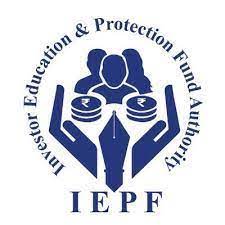
The Investor Education and Protection Fund Authority (IEPFA), will organise a State Level Conference on Financial Literacy in Amrit Kaal – Empowering Investors in association with the Department of Tourism in Aizawl.
Investor Education and Protection Fund Authority:
- It was established in 2016 under the Companies Act, of 2013.
- The Authority is entrusted with;
- The responsibility of administration of the Investor Education Protection Fund (IEPF).
- Make refunds of shares, unclaimed dividends, matured deposits/debentures etc. to investors and promote awareness among investors.
- Nodal Ministry: Ministry of Corporate Affairs
Investor Education Protection Fund (IEPF):
- It has been established under Section 205C of the Companies Act, 1956 by way of the Companies (Amendment) Act, 1999.
- The following amounts that remained unpaid and unclaimed for a period of seven years from the date they became due for payment are credited to the Fund:
- Amounts in the unpaid dividend accounts of the companies
- The application money received by companies for allotment of any securities and due for refund
- Matured deposits with companies
- Matured debentures with companies
- Grants and donations are given to the fund by the Central Government, State Governments, companies or any other institutions for the purposes of the Fund
- The interest or other income received out of the investments made from the fund
Seven New Battalions Of The Indo-Tibetan Border Police (ITBP) Force:
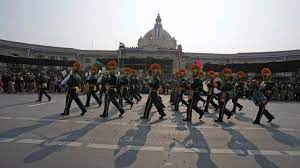
Indo-Tibetan Border Police is one of the Central Armed Police Forces of India.
- It is a specialized mountain force and most of the officers and men are professionally trained mountaineers and skiers.
- It was raised in 1962, in the wake of the Sino-Indian War of 1962 for deployment along India’s border with China’s Tibet Autonomous Region.
- ITBP was initially raised under the CRPF Act. However, in 1992, parliament enacted the ITBPF Act and the rules there under were framed in 1994.
- The motto of the Force: “Shaurya-Dridhata-Karma Nishtha” (Valour – Determination – Devotion to Duty).
- Nodal Ministry:Ministry of Home Affairs.
First G20 Culture Group (CWG) Meeting:
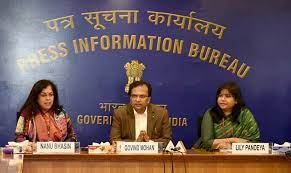
Ministry of Culture is organising the First G20 Culture Group (CWG) meeting in Khajuraho, Madhya Pradesh from 22nd to 25th February 2023.
- The working group will have four meetings and they will be held in Khajuraho, Bhubaneshwar, and Hampi.
- The theme of the Khajuraho meet is “Protection and Restitution of Cultural Property”.
- Khajuraho is an ancient city known for its majestic temples and elaborate sculptures.
- The Khajuraho Group of Monuments is a UNESCO World Heritage Site which was constructed by the Chandela Dynasty between 950-1050 AD.
- These monuments are built in Nagara-style architecture and ornamented with intricate and detailed sculptures.
- The monuments include Hindu and Jain
- According to historical records, there were 85 temples in the temple site in Khajuraho, covering 20 square kilometres, in the 12th Century AD.
Omorgus Khandesh : New Beetle Species
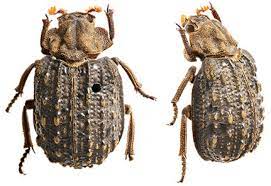
A scientist from the Zoological Survey of India, Western Regional Centre (WRC), Pune discovered a new beetle species.
Omorgus Khandesh:
- It is a necrophagous and also called a keratin beetle.
- This species belongs to the Trogidae family. With the addition of this new species, now there are a total of 14 extant species of this family in India.
- The beetles of this group are sometimes called hide beetles as they tend to cover their body under the soil and hide.
- It is mainly associated with bird and mammal nests or burrows.
- Necrophagous is the arthropods which feed directly on dead remains and constitute are called necrophagous.
Thwaites Glacier : Study

Scientists studying Antarctica’s Thwaites Glacier say warm water is seeping into its weak spots, worsening melting caused by rising temperatures.
- Thwaites Glacier nicknamed the “Doomsday glacier,” is a fast-moving glacier in West Antarctica.
- It covers an area roughly the size of Great Britain.
- It is 120 km wide at its broadest.
- The glacier is rapidly losing ice to the ocean in response to climate change and changes in ocean circulation.
- It loses more than 50 billion tons of ice to the ocean yearly, contributing to about 4% of the annual sea level rise.
- The glacier holds enough water to raise global sea levels by 65 centimeters.
- It has retreated by about 14 kilometers since the late 1990s.
- It also acts as a buffer, holding back neighboring glaciers that contain around three meters of potential sea level rise.
Periyar Tiger Reserve : Bird Survey

A four-day bird survey conducted by the forest department has identified 231 species of birds in the Periyar Tiger Reserve, of which 11 species of birds were not recorded during the previous surveys
- Periyar Tiger Reserve located in the Western Ghats of Kerala.
- It was declared a Tiger Reserve in 1978.
- It gets its name from the River Periyar which has its origin deep inside the reserve.
- Two main rivers, Pamba and Periyar drain the reserve.
- It is home to many tribal communities including the Mannans and the Palians.
- It consists of tropical evergreen, semi- evergreen and moist deciduous
- Flora :There are more than 171 species of grasses.
- Important flora includes teak, mangoes, rosewood, jamun, jacarandas, terminalias, tamarind, royal ponciana, bamboos etc.
- Fauna Includes Elephants, Wild Pigs, Sambar, Gaur, Mouse Deer, Dole or Barking Deer, Indian Wild Dog and Tiger.
- The major four species of primates are also found at Periyar – the rare lion-tailed macaque, the Nilgiri Langur, Gee’s Golden Langur, Common Langur and Bonnet Macaque.
- It Is also being considered as the habitat of the elusive Nilgiri Tahr.




